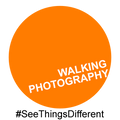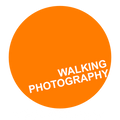Photography in September

All Change Here
As the school gates open for those in education, so the ticket gates open for those waiting for less extortionate holiday prices! September is a time of change for one and all as autumn slowly but surely begins its advance. Whatever plans you have in the weeks ahead and whatever you like to photograph, here’s four photography themes to explore with your camera in September…
Mist, Fog & Cloud Inversions

As the contrast between daytime and nighttime temperatures increases so to does the chance of photogenic weather conditions, particularly in the mornings. Such conditions often conjure imaginings of valleys frothing like a witch’s cauldron. However, these fleeting environments also make great opportunities in other genres too. Wildlife, people and street environments also take on a new, unique quality.
Mist and fog offer a good opportunity to experiment with exposure compensation (deliberately under or over-exposing for the scene). In most scenarios, you’re likely to find the camera naturally under-exposes these types of scene.
Enthusiastic observers of the weather can often identify good conditions for potential fog, mist and cloud inversions, one tip is to look at the temperature and dew point. The dew point is where condensation occurs, so if the dew point is 8°C and the temperature is 8°C, you’re likely to enjoy some atmospheric conditions.
Further inspiration: When I think of foggy, atmospheric street photography I always think of John Bulmer who deliberately sought out those conditions when working. Anapprowach reflected so well in his The North Photo Essay
Small Changes...

From the vibrant yellowing of the ferns to the first leaves beginning to fall, September is a time of small changes. While those dramatic and iconic autumnal scenes will arrive much later, a careful eye will uncover a number overlooked seasonal spectacles!
I often think that early changes look awesome in contrast with a largely unchanged environment. As simple as a single orange leaf surrounded by green leaves. Such juxtapositions often benefit from a shallower depth of field, the orange leaf sharp with the green leaves left blurred in background.
As well as the contrast in nature, street and travel photographers will also notice small changes, commuters begin to wrap up more, while fashion conscious passers by expertly colour match their clothing with seasonal surroundings. Careful observers of the light will already be noticing a more directional quality to environmental lighting, while the produce in local food markets also begins to change.
Whatever changes you try to capture, it can be all too easy to lose the essence of a scene when translating it into a small 2D image.
What are you trying to say with the photo? Is what you're trying to say obvious to an objective viewer? Often, the more questions you ask before taking a photo the better the results.
Further inspiration: Few capture the seasonal transitions across Yorkshire's woodland's better than woodland photographer Simon Baxter.
Nectar Rich Service Stations

As flowers die off, places to find nectar and pollen become fewer and further apart. This can result in mass gatherings of butterflies, bees and other insects trying to grab the last of the sweet stuff! On calm, warm days, look for lingering flowers, in particular ivy blooms that can act like a pollinator magnet this time of year.
With fewer blooms on offer it can be a great moment to try some in flight shots by pre-focussing on a flower (best used in conjunction with a tripod) and waiting. Your camera will want a minimum of 1/2000th shutter speed and you’ll also want to fire your fastest burst of shots (drive mode) before your subject reaches the desired spot.
Further inspiration: If you want a unique take on butterflies in flight checkout Andrew Fusek Peters' Butterfly safari.
Astro Photography

It’s already been quite an eventful year for watchers of the night skies. 2024 is proving to be a really active year for seeing the Northern Lights with experts predicting this year to be a peak in the solar cycle.
September in general is one of the best months to watch out for the for Aurora Borealis, so it’s definitely worth keeping an eye out for aurora alerts (I use AuroraWatch UK alerts).
One of the questions I often get asked with the Northern Lights is whether it looks as good to the in reality as it does in the camera. The short answer is no. The more light pollution there is the less likely you’ll be able to see it with the naked eye, however cameras, even phone cameras can be very good at picking up the aurora colours, even in light polluted areas. So it’s always worth taking a quick look through your phone or camera even when you can’t see anything yourself.
Aurora or not, the night sky is always worth pointing your camera at, it's Aso worth noting in the diary the Harvest Supermoon on the 18th September.
Further inspiration: One of my goto resources for Night Sky inspiration is the PhotoPills app and website




Leave a comment